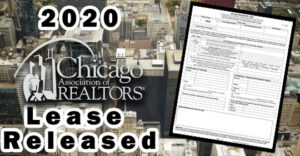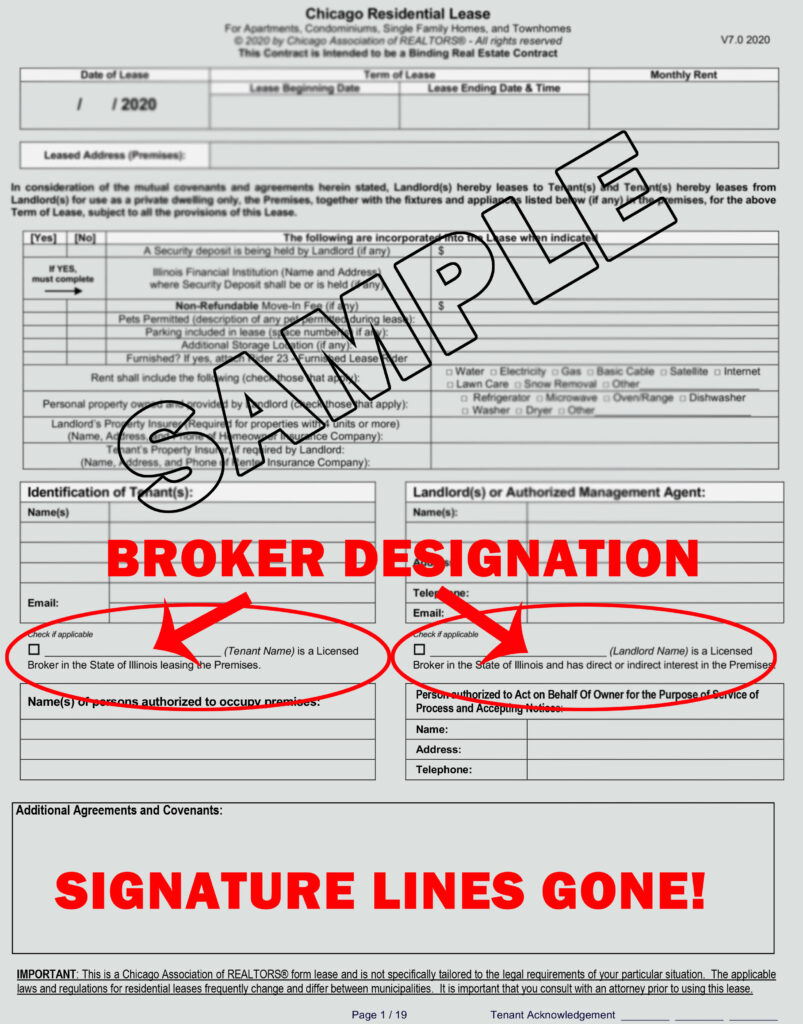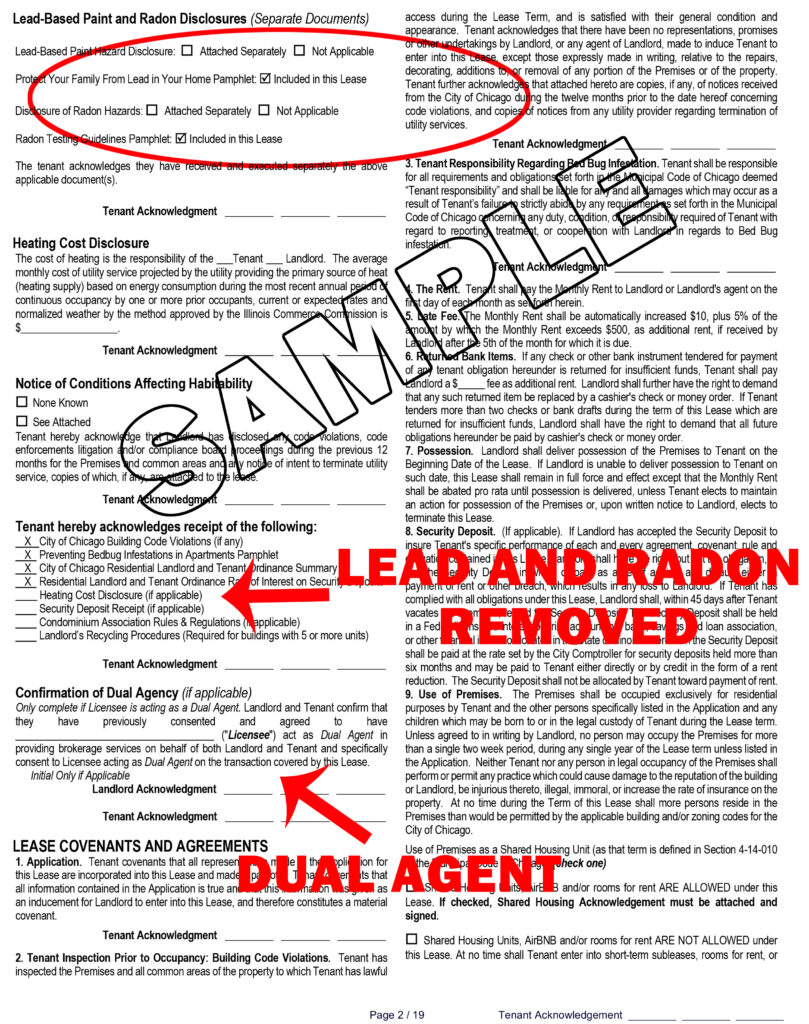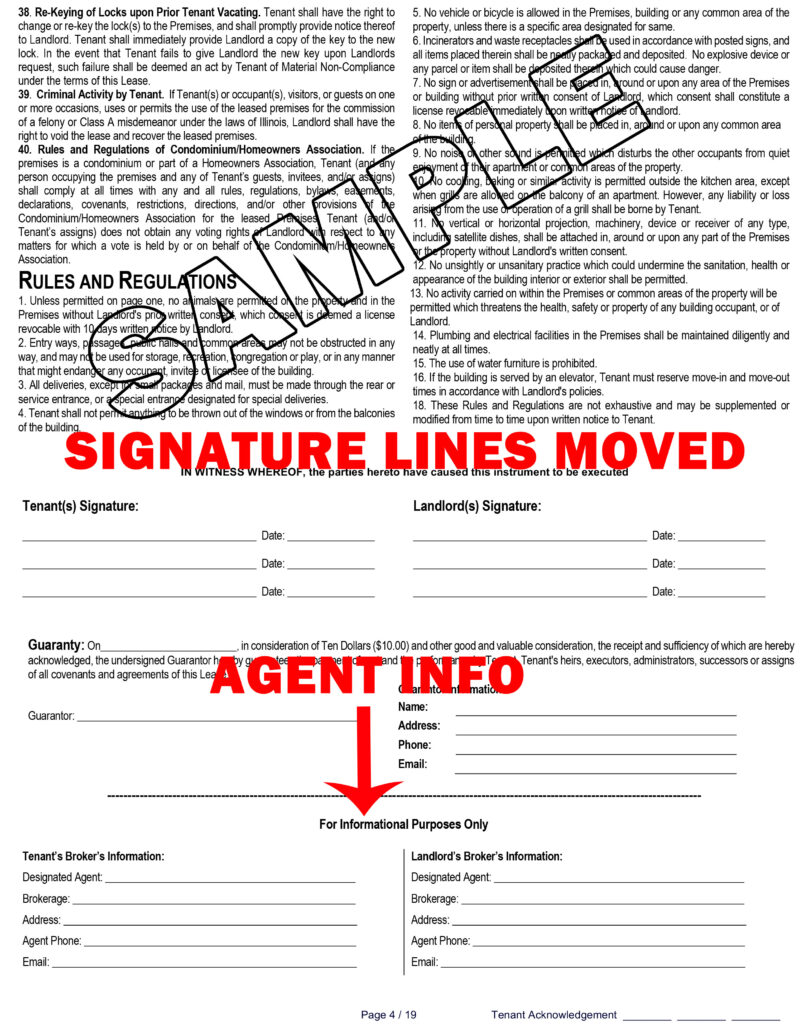 New Lease Form Released
New Lease Form Released
Late last week, the City of Chicago finally released its separate summary of security deposit interest rates for the new year. Once the summary was made available, the Chicago Association of Realtors (CAR) could finally go live with the 2020 version of their residential Chicago lease for properties governed by the Chicago Residential Landlord and Tenant Ordinance. Based on my own experience, the CAR form seems to be the most widely used lease in the City of Chicago. In fact, when I draft leases for my clients, I use the CAR form as the base lease and then add a rider that goes a bit deeper than the main form. It’s my favorite starting point for Chicago leases. While the content of the form has not changed too much this year, there are some new changes in formatting that make the lease easier and smarter to use. Let’s take a look at those:
Full disclosure: I am a (proud) member of the Chicago Association of Realtors Forms and Contracts Committee. That said, my comments here are not on behalf of the Chicago Association of Realtors nor their forms committee. One further worthwhile note with regard to the old form: landlords and their agents using the 2019 form will notice that the pdf file for the 2019 document no longer opens! CAR does that to help prevent housing providers and their agents from using a form that might not have the most up to date disclosures on it.
The most striking change to the 2020 form is in the signature portion of the form. The 2019 version placed the signature lines for landlords and tenants signature at the bottom of page 1 of the lease. The 2020 version has moved the place for landlord and tenant signatures to the last page, page 4, of the lease. My own experience in doing sales of small rental buildings is that many landlords abuse the CAR form lease. They use page 1 and nothing else. Placing the signatures at the end will at least force landlords to use all four pages of the main lease (getting them to use the other 20 some pages of disclosures might still be an exercise in pulling teeth).
The 2020 form has added a small line to allow a landlord or a tenant who is also a licensed real estate broker to check a box to indicate that fact in compliance with the broker licensing act. There has also been a section added to page 1 for real estate agents to disclose that they are working as dual agents. That’s a fairly small change that won’t have an effect on many landlords.
 The section about what disclosures have been delivered has undergone some reorganization. Over the years, the section dealing with the lead and radon disclosures has changed a few time. I believe it was the 2014 version that actually tried to incorporate a mini version of the lead and radon disclosures. Now, if applicable, those two disclosures must be separately attached to the lease. The radon and lead based paint hazard pamphlets are part of the 24 page lease package. The actual disclosures are not. I always found it odd that those have to be added in, however, from the perspective of a real estate agent, those disclosures are presumably provided by the listing agent at the beginning of the rental process and, hence, are not part of the leasing package. No longer is a box entitled “applicable” checked for radon and lead disclosures. Instead, the box has been renamed to “attached separately”. Hopefully, this change in verbiage will alert the landlord that there is an additional document to attach, especially considering that the lease notes that the pamphlets are “included in this lease”. Finally, the section ends with a tenant acknowledgement. No longer do the landlord and tenant sign at that location. Again, the goal is not to recreate the disclosures but merely to recognize that they are separately attached. In keeping with the change to this section, the section where the tenant acknowledges receiving certain disclosures is adjusted to remove the lead and radon pamphlets and to add another space for the tenant to acknowledge.
The section about what disclosures have been delivered has undergone some reorganization. Over the years, the section dealing with the lead and radon disclosures has changed a few time. I believe it was the 2014 version that actually tried to incorporate a mini version of the lead and radon disclosures. Now, if applicable, those two disclosures must be separately attached to the lease. The radon and lead based paint hazard pamphlets are part of the 24 page lease package. The actual disclosures are not. I always found it odd that those have to be added in, however, from the perspective of a real estate agent, those disclosures are presumably provided by the listing agent at the beginning of the rental process and, hence, are not part of the leasing package. No longer is a box entitled “applicable” checked for radon and lead disclosures. Instead, the box has been renamed to “attached separately”. Hopefully, this change in verbiage will alert the landlord that there is an additional document to attach, especially considering that the lease notes that the pamphlets are “included in this lease”. Finally, the section ends with a tenant acknowledgement. No longer do the landlord and tenant sign at that location. Again, the goal is not to recreate the disclosures but merely to recognize that they are separately attached. In keeping with the change to this section, the section where the tenant acknowledges receiving certain disclosures is adjusted to remove the lead and radon pamphlets and to add another space for the tenant to acknowledge.
 Finally, the lease concludes by adding some additional space for broker information that is “for informational purposes only”. This will allow agents to put some contact information on the form so that no one needs to go digging around for the information later.
Finally, the lease concludes by adding some additional space for broker information that is “for informational purposes only”. This will allow agents to put some contact information on the form so that no one needs to go digging around for the information later.
So, while I would not say that there is anything groundbreaking about this year’s new lease, I think the form “makes more sense”. I also think the changes in verbiage are smart and will lead to better use of the form in 2020.
If you need help with lease drafting, we do that for landlords! Please feel free to contact us to see if we are a match for an engagement.

